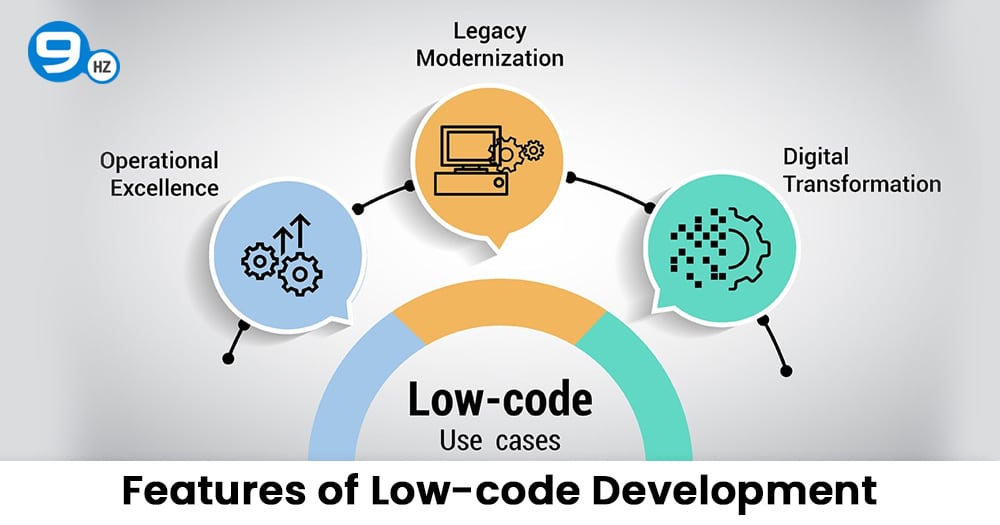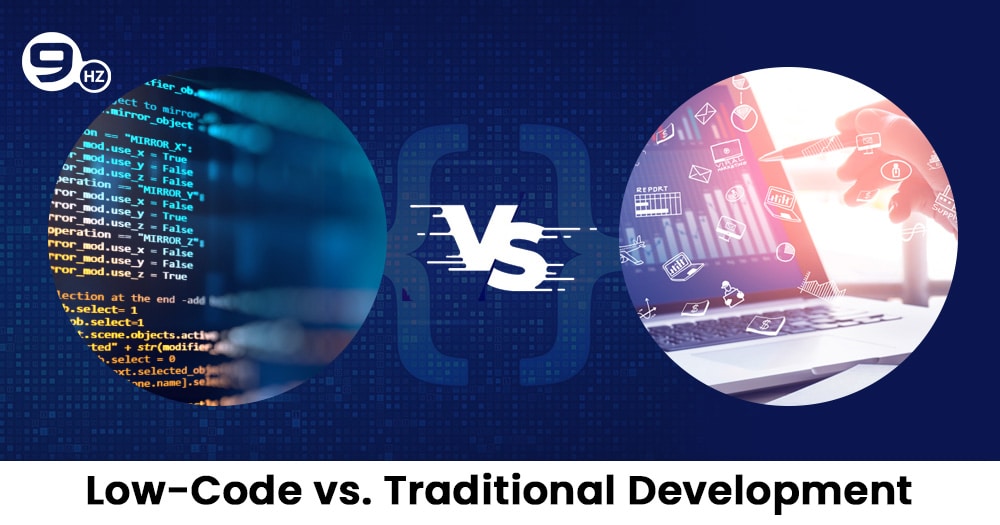Let’s be honest, in today’s world, everyone is heavily dependent on technology. Almost all of the multi-billion dollar companies across the world are tech-related or are investing heavily in tech. Whether it is Google or Apple or Amazon, all the top companies in the world today are now tech companies. Thanks to the boom in technology, we have seen more and more talented individuals coming up with apps that can not only make the lives of the masses easy but also make them rich along the way. Uber and Lyft are examples of tech businesses that run only through apps.
If there is a website that can carry out a certain task for your business, the app can do it even better. There is a reason why Google has launched an app version of YouTube even when there is an already established website that you can go to. The same is the reason for the existence of the Facebook app even though the website had reached almost every corner of the world. Apps are the present and the future. From multi-billion dollar companies to mom and pop stores, everyone is getting on board the app trend.
Having an app not only makes it easy for your customers to do business with you but nowadays also helps in establishing credibility. Traditional and Low code development are two of the most popular methods used for developing applications and software. In this article, we take an in-depth look at low code vs. traditional development methods.
What is Low Code Development?
Low code development has been catching up fast in recent years. The low code development method has gained immense popularity due to its ease of use, short delivery time, and flexibility. The most important feature of low code development is that even people with low to no coding skills can make an app on their own. The simple user interface of low code development makes it equally popular among tech giants as well as small and medium enterprises.
Hire Certified Low Code Developers
Request A Free Quote
What is Traditional Development?
Traditional development is the classic method of developing applications and software. In this method, a dedicated team of developers with heavy knowledge in coding is often required. Traditional development often follows a linear approach. Each stage of the development process has to be completed and tested before going to the next in this method. Traditional development is more time-consuming as compared to low code development.
Key Features of Low code Development

Ease of Development
Drag-and-drop features in low code development make it easy for businesses to develop apps and software. You do not have to know how to write long lines of code without bugs to develop apps using low code development.
Minimal Hand-Coding
With low code development, the developers of your enterprise do not have to worry about spending hours writing codes. You and your team can rather focus on the functionality and the appearance of the application that you intend to create. This way, you will be able to offer a more customer-friendly application thus retaining old customers and attracting new ones.
Can be Customized
Since it is a relatively easy method to develop software and applications, there is a common confusion among developers and business owners regarding its ability to be customized. Any wanted functionality or feature can be added through the low code development method.
Scalability
Whether you own a small business or a large-scale enterprise that deals with complex issues on a day-to-day basis, you can develop a working application using a low code development method. The applications developed using the low code development method works across all devices.
Also Read: Native App Vs (PWA) Progressive Web App
Traditional Development’s Key Features

Here are some of the notable characteristics of traditional development:
No restrictions over the Coding Language
Applications can be created in any language using the traditional development method. Depending on the skills and expertise of the developer, they are free to use any language for developing an application using the traditional development method.
Enables Unlimited Functionality
Meaning coding companies can twist and bend custom in any way they deem fit. The implication here is that virtually, any kind of integration is possible and any feature can be built. While designing a customizable application using traditional development, the developer is free to choose the technology, APIs, hosting and tooling that help to realise the required functionalities.
Total Ownership
Companies using traditional development get to enjoy complete control of all the aspects of the software that’s being created. Organisations opting for traditional development are the owners of the app’s source code and thus, they get to control its architecture, integrability, security and many more associated aspects.
Ensures a Smooth Development Process
To create a successful custom application, one needs an established and well-defined development process. Traditional development ensures that the app can be seamlessly updated, easily maintained, and released to the public.
Apart from the aforementioned features, listed below are other characteristics of traditional development:
- Traditional applications run on a mainframe environment or in a client/server environment.
- Traditional development methods offer a great amount of control to the developers.
- Applications made using the traditional development method can be deployed across all platforms to be used in all devices.
Hire Appian Developers For Low Code Solutions
Request A Free Quote
Disadvantages of Low Code Development
Here are some of the disadvantages of opting for low code development:
- Scaling opportunities are limited
- The user interfaces look generic
- The application is less customizable
- There are locks on vendor-provided hosting options
What are the Disadvantages of Traditional Development?
Listed below are the cons of traditional development:
- To put it straightforwardly, traditional development is more expensive. Even if the company was to create the app in-house, or even if it were to near-source or outsource the building process, traditional development requires one to make some serious budgeting plans
- If one were to compare the app building process between low code development and traditional development, the latter lasts approximately somewhere between a couple of months and a year.
- To create an app using the traditional development process, one needs a well-stacked team of QA engineers, developers, designers and other experts. As a skill, coding is hard to master and entrepreneurs need not one but a team of specialists who have a good knowledge of the craft.
Low Code vs. Traditional Development: When to Choose Either of the Options?
Choosing the right development process is a critical step in the application creation process. Before making a choice an app development company must consider:
- Development Resources: The availability of resources play a key role in choosing between low code development and traditional development. If a company does have access to resources, the traditional process is the way to go. On the other hand, if an organisation is understaffed, it is prudent to choose low code.
- Determine the importance of the App: If a mobile phone application is the core of a business, the developer must go with traditional development. However, if the organisation is looking to verify a concept, for which, low code development is a wise choice.
- Does the app need a unique user interface: If the app does need a unique user interface, using the traditional development process is a prudent choice. If liquidity is an issue, the organisation should hire a great designer who could work with low code. Creating an app using a low code development process will not give a developer to wiggle around the user interface (UI) and User experience (UX).
- Scaling: Scalability is also a determining factor for a coder to choose between a low code development process and a traditional development process. Scaling to put simply is the capacity of an app to change as well as grow as the market forces and needs require. While scaling can be an issue for apps created using the low code development process, the traditional development process allows unlimited scaling.
- Expected time of release: In low code vs. traditional development, one of the determining factors is the time taken for the app to reach people’s mobile phones. While the low code process is quicker, the other one takes time. It is estimated that an app using the traditional development process takes somewhere between a few months to approximately a year.
- Integrations: To achieve deep integration, it is prudent to use the traditional development process. A suitable example of deep integration is an app revolving around the stock market. It will be used not just to get data from the stock market but also to process it in the app and share it with other services. As the app requires more than just one process, low code development is not suitable.
Also Read: Top 10 Web Development Frameworks in 2022
Low Code vs. Traditional Coding: Why is Low Code Frequently Used?

As stated above, low code development empowers business users and developers to build smartphone applications quickly. This makes the low code development process the popular method amongst developers. Here are some of the reasons why:
- A low code development does not require the developer to have expertise in coding.
- Thanks to the drag and drop features, low code development can be operated easily
- Economic capital is one of the fundamental factors in the difference between the low code and traditional development processes. While big corporations can hire a team of experts for developing an app by using a traditional development process, the same can’t be said for start-ups. That’s where the low code development process comes in. If a low code development company has somewhere between $20,000 and $30,000, it is prudent to use the low code development process.
- Thanks to the convoluted nature of applications using the traditional development process, there is a high occurrence of bugs. On the other hand, the low code development process ensures a smooth-running system as the occurrence of bugs in the early stages of smartphone application is comparatively trivial.
Still Looking for Low Code Development Company?
Hire Dedicated Developers
Notable Examples of Low Code Platforms
Low code platforms are the means through which a low code developer can create a smartphone application using low code development. Here are some of the low code development platforms that are frequently used by developers and here you can compare OutSystems and Mendix.
- Mendix – Established in 2005, is a platform that predominantly is used for web-related issues. However, it can also be used to create mobile and web applications. The platform is known for offering features such as ML (machine learning) and AI (artificial learning). However, it is important to keep in mind that to make the most of this platform, low code developers need to take advantage of its features.
- Acceleo – Founded in 2006, Acceleo is an open-source code generator for Eclipse. It is used to generate any textual languages such as Python, Java and PHP.
- Appian – Dating back to 1999, Appian is an application development platform that comes with features such as in-built development modules and a visual interface. You can hire appian developers for low code solutions.
- FileMaker – FileMaker is a platform that helps in solving a wide range of problems such as sharing, creating and integrating custom apps. It combines other facets such as business logic, data and user interface layers to deliver mobile apps that function seamlessly on all devices.
- OutSystems – It is a platform for omnichannel enterprise application development.
- Servoy – Servoy is a low code platform that can be used for both engagement systems and omnichannel core systems. Focused on aspects such as building products and software vendors, the platform gives control to low code developers to work on both business logic and UX while simultaneously maintaining productivity.
- DMS Software Reengineering Toolkit – For some time, DMS Software Reengineering Toolkit has been used for the implementation of a wide range of practical tools. It is a system that defines domain-specific languages and later translates them to other languages.
- GeneXus – GeneXus entered the market approximately three decades ago. It is a cross-platform knowledge-based development platform in which enables the creation of apps that are compatible with Microsoft Windows and smart devices.
- WaveMaker – Founded in 2003, WaveMaker is a platform that focuses on delivery users and core app development. The apps created on it are mostly based on open standards and in the background; the tool can generate code with the help of drag and drop visual development.
- UiPath – UiPath is a platform that was founded approximately a decade and a half ago in 2005. It is a platform that looks after RPA (robotic process automation) and enterprise automation.
- Microsoft Power Fx – Microsoft Power Fx is an open-source low code programming language. The general-purpose programming language that entered the market in 2021 is useful for expressing logic throughout the Microsoft Power Platforms.
- Uniface – Dating back to the 1980s, Uniface is amongst the popular platforms. It is highly recommended amongst developers for creating low code applications.
Also Read: Augmented Reality in Education, Healthcare, Business
Notable Examples of Traditional Development
Here are some of the best examples of applications that were created with the help of the traditional development process:
- Google – Regarded as one of the world’s biggest tech giants, Google entered the market in September 1998. It specialises in internet-related services such as hardware, cloud computing, online advertising technologies, software and cloud computing.
- Meta – Dating back to approximately a decade and a half ago in 2004, it was initially established under the title TheFacebook, Inc. Meta is amongst the Big Five organisations in the IT sector. The corporation based in Menlo Park is renowned for managing the social networking sites Facebook and Instagram and also the messaging service WhatsApp, all of which are internationally accessible. Meta is known for offering services and products like Facebook Portal, Facebook, Facebook Watch and Messenger. Recently, Meta also acquired Mapillary, Oculus and Giphy. Apart from that, Meta also has a stake in Jio Platforms.
- Amazon – What began as an E-commerce Company today is one of the most powerful corporations. Apart from delivering a wide range of products, Amazon today also offers services such as artificial intelligence, cloud computing and streaming. Considered as one of the Big Five, Amazon today ranks amongst top-five IT companies such as Microsoft, Apple, Facebook and Google. Moreover, Amazon was described as “one of the most influential economic and cultural forces in the world”.
- Flipkart – Founded in 2007, Flipkart is a prominent Indian company that deals with E-commerce. It began as a website for purchasing books until later when it decided to diversify its products to include groceries, fashion, electronics, lifestyle products and home essentials. In August 2018, Walmart, a US-based chain acquired a controlling stake in Flipkart for US$16 billion, making the latter’s value approximately $20 billion.
- Microsoft – Established in April 1975, the Microsoft Corporation is known for producing personal computers, computer software and consumer electronics. Amongst its best-known software products include the Microsoft Edge, Internet Explorer, Microsoft Office suite and Microsoft Windows line of operating systems.
Also Read: How to Develop Taxi Booking App Like Uber?
Low Code vs. Traditional Development: Which to Choose?
So, an iOS or android application development company before creating an app has to encounter this daunting question: between low code vs. traditional development processes, which one is a prudent choice? The best answer to that question lies somewhere in between. While there are significantly lesser restrictions on an application created using the traditional development process, it is important to note that the entire procedure is expensive and can stretch somewhere between a few months and a year. On the other hand, low code development while less expensive and is a quicker process does have problems with the upgrade and future diversification of the app. So, the best choice is dependent on the availability of resources, applications needs and skill set of the development team.
Great Together!









